
Welcome to Turkish Travel’s hair transplantation package. The reason we are offering this package for our visitors is to provide the same service under the world standards with competitive rates. Dr. Erdal Tugsel who is graduated from the Medical Faculty of Hacettepe University, spent 6 years as a resident in Plastic and Reconstructive Surgery Department at Aegean University Medical Faculty (1990). Then he worked at various hospitals in Diyarbakir, Ankara and İzmir until 1996. Now he has been working in his private clinic and in private hospitals at Izmir for four years. By the way in 1995 he visited Dr. C.O.Uebel who is a very famous surgeon in hair transplantation in Brasil. Dr. Tugsel serves for his patients at various subjects such as nose, breast, laser lip aesthetic liposuction operations and calf prosthesis.
Here are the advantages of hair transplanting:
1- Unlike other methods, hair you’ll have is belong to you.
2- No artificial and plastic materials are used for the rest of your life
3- No special treatment necessary for the growing.
4- The excess heat of the body is exhausted from the scalp. Unlike other methods hair transplantation is not blocked the full thermal and oxygen exchange between body and environment
5- Remaining hair on the scalp does not lead the infection and pimple occurrence under the effect of sweat.
7- You don’t have to visit the medical center in every 2 months for replacement and refreshment process.
8- Thanks to Turkish Travel’s health treatment package, you’ll have the chance to get the operation with a reasonable prices.
9- Since Dr. Tugsel is an aesthetician, no one can realize that the patient has an operation.
10- Patient is not effected psychologically from the response of the social environment such as business relations, friends and family members at first meet. The growth process happens gradually. No shock effect is occured.
The hair transplantation is the most convenient method for the treatment. Live, growing and healthy hairs. Knowing that originally belongs to you. Good to be free and unlimited freedom anytime anywhere. Let’s learn about the method and treatment procedure. We would like to invite you to get the advantage of this treatment package with less cost as well as our hotel package. Please click the links below.
Hair loss is classified under 7 categories: The hardness and the quotation of the operation is directly related to the strength of the baldness. Here you will examine is general view of the baldness category that is classified under 7 stages.
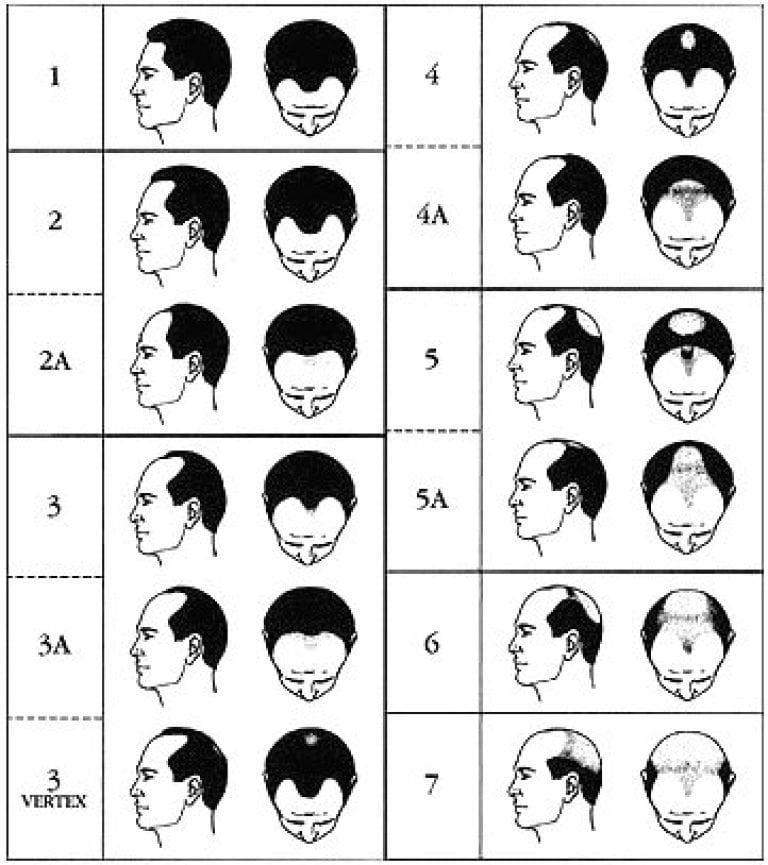
et’s examine the transplantation process with the real pictures that were taken during the operation time..
1- The vital roots are taken from the upper neck section for planting with a local anesthesia.
2- The bunch of vital roots is separated under the hygienic conditions for planting.
3- The vital roots having great strength for baldness that were taken from back side of the head are planted one by one to the open area carefully.
4- For planting mini and macro graft methods are using in our center.. Mini graft caters 3 or 4 roots at a time. Micro graft caters 1 or 2.
5- Upon planting, the scenery of the roots is shown like this under the binocular.
6- After the operation, the scalp is covered by the hygienic bandage for 48 hours time. During this interval, it’s not advisable to lay down parallel on the ground for the sake of operation. After 48 hours the bandage is taken out and the patient can be free after this period.
7- The planted hairs fall down within 2 months, after that period planted roots activate the new hair strings and the visible part is now your original hair that gives your life’s freedom for the rest of your life.. Unlike other methods, hair transplantation has no limitation for a person.
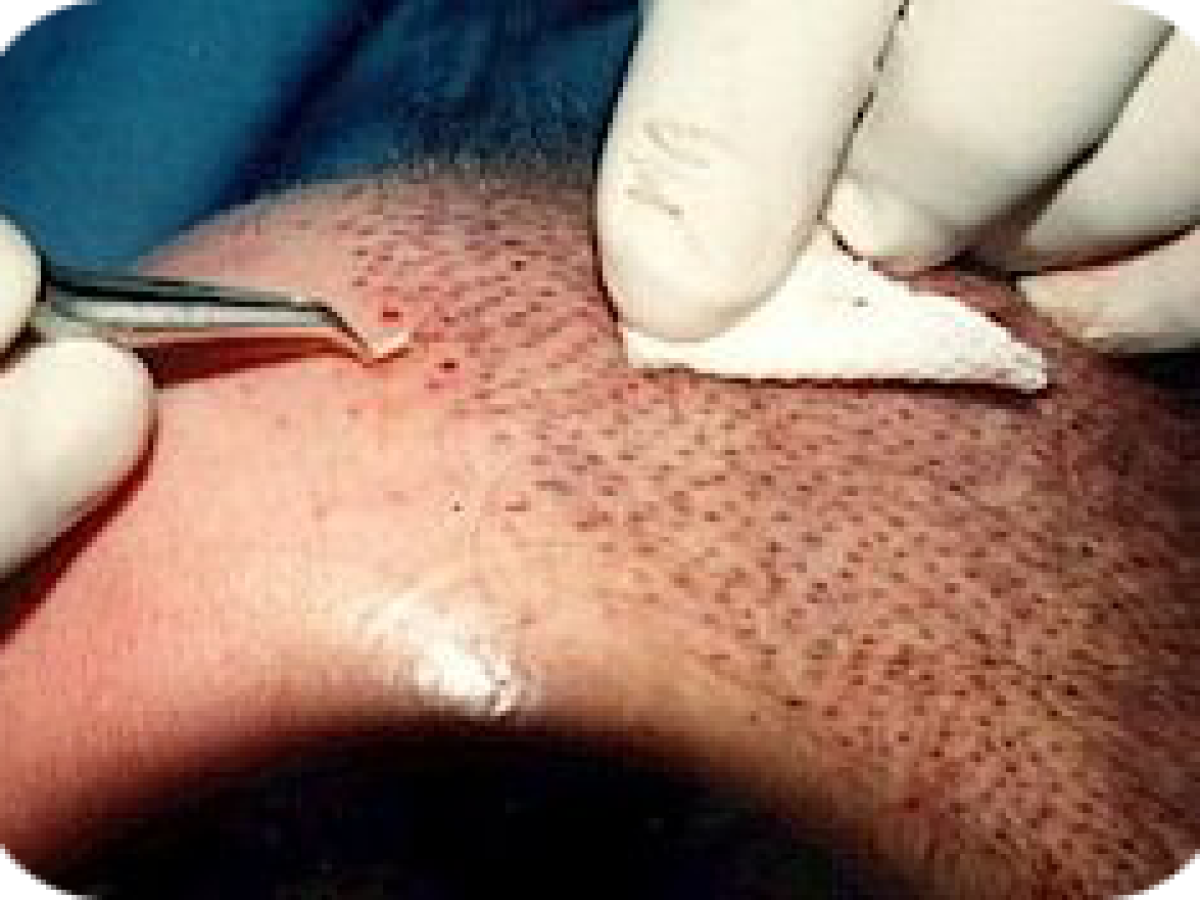
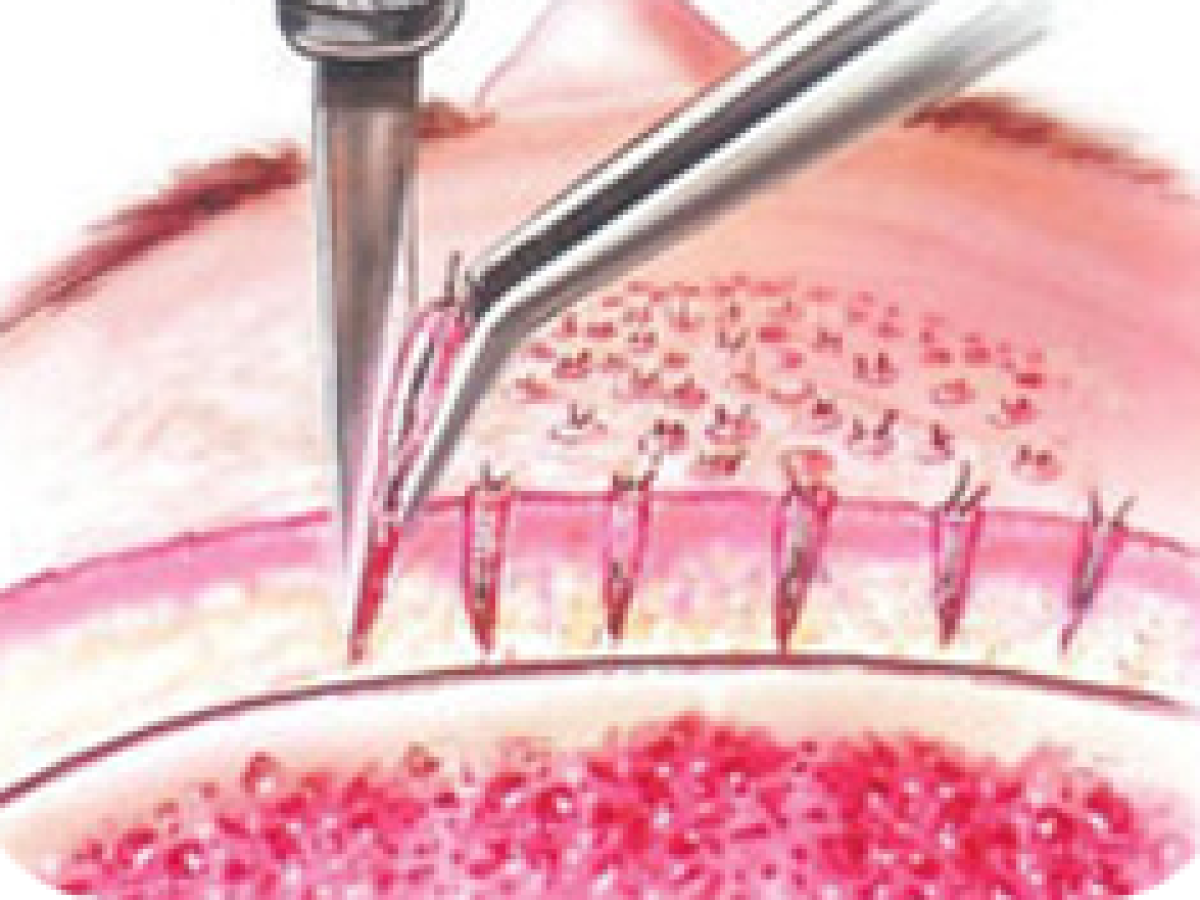
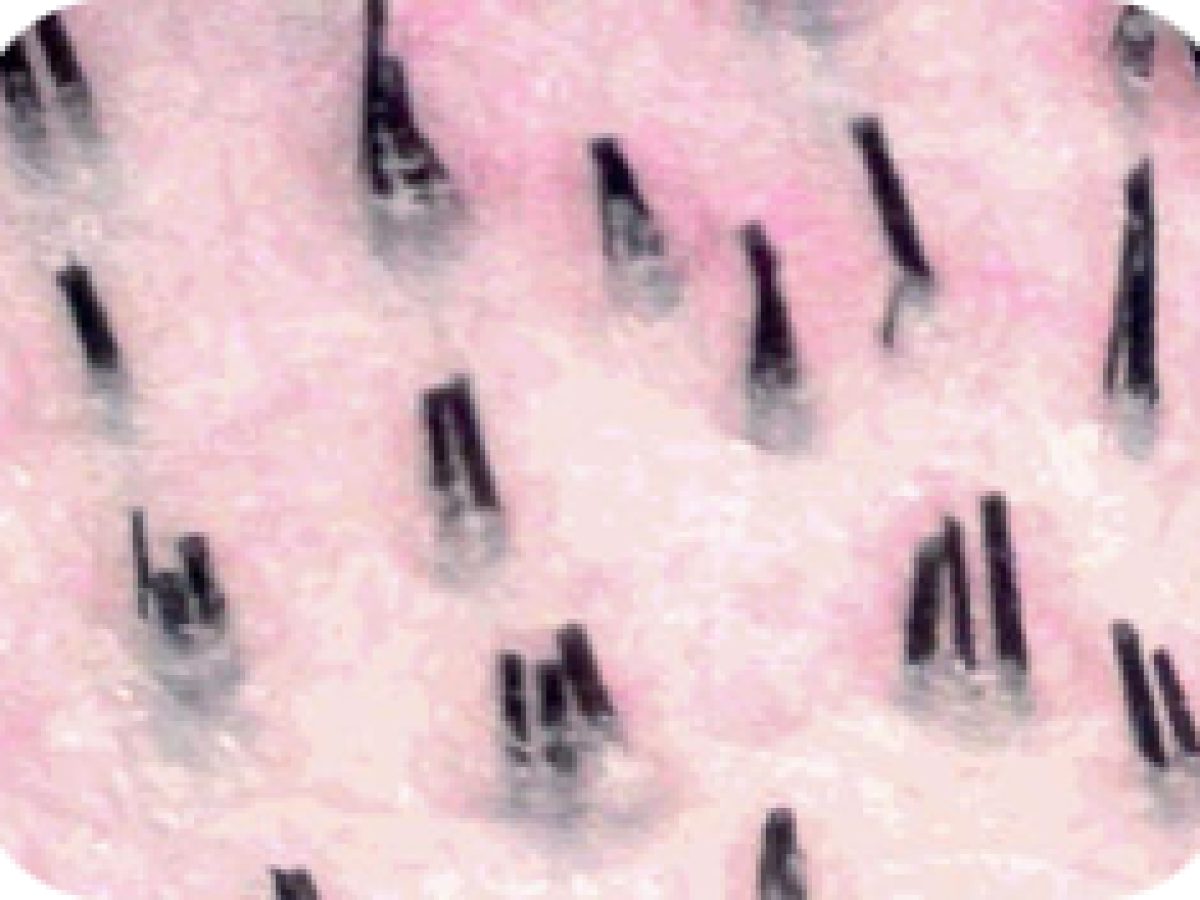
The actual photos below is taken from the Dr. Tugsel’s Medical Center and published under the permission of the patients: For the next page please use the arrow below.



# of sessions: 1
# of grafts: 4849
# of sessions: 2
# of grafts: 5188
# of sessions: 1
# of grafts: 2800



# of sessions: 1
# of grafts: 4512
# of sessions: 1
# of grafts: 3655
# of sessions: 1
# of grafts: 2750



# of sessions: 1
# of grafts: 1800
# of sessions: 1
# of grafts: 5259
# of sessions: 1
# of grafts: 5897
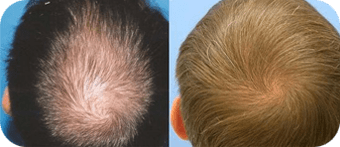
# of sessions: 1
# of grafts: 1200

What is the calendar for the whole treatment?
We are offering this package as door to door service. For more information about the treatment package, we encourage you to check our DKH004 coded tour package on our tour gallery section.
What is the success rate of transplants?
Measured in terms of graft survival, hair transplants, when performed correctly by experienced and dedicated physicians, are virtually 100% successful.
Am I a good candidate for a hair transplant?
The underlying factors in determining your success rate as a candidate is the availability of quality donor area and your general health. Most men experiencing MPB, or those suffering damage from an accident, make excellent candidates. Even those experiencing severe hair loss can benefit from hair transplantation. Women are finding transplants an excellent way to improve their appearance. During your initial consultation.
Will my hair transplant be natural looking?
A successful transplant will give you a natural look with little cause for concern. Since its inception during the 1950s, great advances have been made in the techniques of hair transplant surgery so that transplants performed today are reasonably undetectable under normal daily circumstances.
Why does the scalp become numb after transplant surgery and how long does this condition last?
Temporary numbness, which results from interference with the superficial nerves during the grafting process, may occur in the grafted areas and surrounding areas as well. This temporary numbness should disappear in about three months, although it may take as long as eighteen months before full sensitivity returns to the area. Patients report neither discomfort nor interruption to their daily routine because of this condition.
Is age a factor in getting a hair transplant?
Age plays no role in hair transplant surgery. Doctors has successfully performed hair transplantation procedures on men in their sixties and seventies. He pays careful attention evaluating our young candidates who are experiencing MPB because he believes it is senseless to transplant hair preprogrammed to fall out. Experienced physicians can usually predict hair loss patterns. Rather than age, health and available donor area are the two most important considerations for a successful hair transplant.
Will my transplanted hair need any special treatment?
Once the surgery is complete, your newly transplanted hair requires no special treatment. This hair, preprogrammed to live forever, continues to live and grow naturally and requires the same general care as your non-transplanted hair. Once fully grown, you can cut, style, or color this hair as you wish.
Is Minoxidil a viable alternative for growing hair?
Tests show mixed results which do not weigh heavily toward using this product. Minoxidil was developed by the Upjohn Pharmaceutical Company as a blood pressure medication under the trade name of Rogaine (TM). In 1988 it won approval for the Federal Drug Administration as a topical application for the treatment of baldness. According to dermatologist Arthur Bertolino, M.D., Ph.D., Director of the Hair Consultation Unit of New York University Medical Center, Minoxidil causes significant cosmetic improvement only 10% of the time. Tests have been concentrated on patients who are not yet shiny bald. Continuing tests by the Upjohn Company show Minoxidil use affords an 8% chance of new hair growth on the top and sides of the head but has no effect on hair growth along the front hairline. To date, the results are unconvincing at best.
Some researchers have expressed concern about the long term effects of Minoxidil since the drug is absorbed directly into the blood stream. Using Minoxidil twice daily for the remainder of your life to grow and maintain any hair is another drawback. Once use has terminated, the newly grown hair falls out. The financial commitment is very steep since the monthly cost averages from $50.00 to $70.00. Over one’s lifetime, this can be quite costly.
How long after surgery can I resume my normal activities?
Since hair transplantation is considered minor surgery, all strenuous physical and recreational activities should be curtailed for at least thirty-six hours following surgery. The protective bandages applied will be removed the morning following surgery and your hair will be washed and blown dry. Most patients can return to work after this visit with little interruption to their schedule.
Are hair transplants expensive?
The cost of hair transplantation will vary depending on the size of the bald area, the number of grafts required, and the procedures employed to meet your expectations and desired results. When you consider that the cost is amortized over your lifetime, hair transplantation is cost effective. Once complete, there are no hidden expenses or ongoing maintenance costs. All fees will be discussed during your initial consultation. Occasionally, the final cost will differ from the estimate due to the patient’s desire for additional treatments or procedures.
What are mini-grafts and micro-grafts?
The ultimate aim in hair transplantation surgery is to produce a soft natural-looking hairline along with a full dense crop of hair throughout the top and crown of the head. By using minigrafts, and micrografts, the experienced physician can achieve these results. For this reason, it is important to select a physician with great surgical skill and artistic ability. The sculpturing of the hairline to enhance and complement one’s facial features is a real art and the physician’s artistic skill is of primary importance in achieving the desired results. Minigrafts, which contain a greater number of hair follicles than micrografts, are used throughout the crown and top of the head where a fuller effect is desired. These grafts, usually comprised of coarser hair, provide the greater density needed in that area to achieve natural looking results.
Micrografts are much smaller than minigrafts and are often comprised of two or three hairs transplanted along the hairline to provide a natural look. These smaller grafts, although essentially the same, are often referred to as line grafts or split grafts. The use of smaller grafts provides tremendous flexibility in distributing natural hair more evenly throughout the bald area. The advantages of these grafts speak for themselves.
Can single-hair transplants be done?
It is important to understand that hair grows naturally as “follicular clumps.” Although there is individual variation, in most people the following distribution holds true:
* Approximately 10% of the hair grows as one (single) – haired units.
* 50-60% as two hair units.
* The rest as 3 to even 5 haired units.
Excellent results are obtained by preparing micrographs as naturally existing follicular clumps, complete with most of their sebaceous glands and adequate dermal and adipose protective tissue left around them.
Single-haired micrographs split away from follicular clumps produce a lower proportion of hairs that survive transplantation. In fact, some studies indicate that there may be a net loss of 25-50% of the transplanted hair, when done in this fashion.
In hair transplantation the availability of donor area is our single most important consideration. Therefore, it is not a good practice to “waste” donor area by attempting a transplant of single-hair units exclusively. Let us not forget that only 10% of the existing hair grows as single-hair units.
What options are available for out-of-state patients?
To simplify travel plans and minimize inconvenience, two options are available for out-of-state patients. Either a complimentary consultation may be scheduled at my office before making a commitment for hair transplant surgery, or the consultation and surgery can be accomplished in the same day. Should you choose the latter option, photographs and pertinent medical history must be furnished prior to your scheduled visit. Subsequent to review, Your doctor will contact you by telephone to discuss his recommendations for your procedure.

The traditional way to attach a wig to the scalp is with tape or glue. The problem is that the wig can come off relatively easily, causing embarrassment in public or humiliation in an intimate setting. To try to solve this problem wig manufacturers have developed some new and exotic methods of attachment.
Some wigs are firmly held in place by actual wire loops, which are surgically stitched, into the scalp. While the wig hardly ever falls off, serious infection (not to mention uncleanness and odor) easily occurs. That’s because the holes in the scalp usually don’t fully heal and close.
Another method of keeping a wig from falling off is “tunnel grafting.” Pieces of skin are surgically cut out from behind the ear lobe or from the groin areas and them implanted into the scalp to form living loops of skin. When fully healed, they can accept plastic fasteners that are then secured to the wig.
Wig makers have even tried individual synthetic fibers with miniature barbs at the tips that hook directly into the scalp. These are called “implants” (not transplants), and have been outlawed in most states because of the severe pain, infection and scarring they almost always cause.
In hair “weaving”, the wig is often made up of severed human hair which is fastened onto a filament netting that is, in turn, tied tightly to the client’s own remaining natural hair in several places around the edge of the horseshoe-shaped balding area.
The problem is that the client often experiences additional permanent hair loss from the frequent retying or “tightening” of the wig. Because his remaining natural hair grows an average of ½ inch per month, the woven wig begins loosening within the first week. From then on, for as long as he continues to wear the “system”, he will have to return approximately every six weeks to have it tightened.
After about six months he can begin to lose hair permanently along the stress points where the wig is tied. This is known in dermatology as permanent traction alopecia.
If you’re considering signing a contract to purchase a wig, be sure to ask for clear and complete answers to all of your questions about exactly how your wig will be attached to your scalp.
Find out also the total initial cost of one wig and the cost of ongoing maintenance. What wig advertisements don’t tell you is that you usually have to buy at least two wigs: one to wear while the other is being cleaned and refurbished. At $1,000 – $3,500 each for an average-to-excellent quality wig, and a normal usability span of less than two years per “piece”, the lifetime cost of wearing wigs is sizable. And, in the case of the “gradual transformation” that’s often advertised, you may have to buy four or more different wigs!
Also ask the hard questions about weather-related and perspiration-related activities. Many wig advertisements promote the idea that a man can swim and shower with his wig on. The fact is, a man can swim and shower with a wig on, but these activities usually will quickly cause permanent damage to the wig.
You should ask the wig salesman:
1) “how will swimming and showering affect the color and styling of my wigs?” and
2) “How much damage will exposure to soap, water, salt and chlorine cause, and what will that do to the usability span of my wigs?”
Remember, unlike artificial limbs, wig prostheses are highly visible and extremely delicate. To keep them looking presentable, they must be of high quality, and be maintained with scrupulous care.
In 1988, the U.S. Food and Drug Administration (FDA) approved the first medication for application to the scalp that has been proven to grow human hair: minoxidil solution 2%. It is currently marketed under the name Rogaine by Pharmacia & Upjohn and is now available in a 5% solution to attempt to satisfy men who found the weaker solution of little effect or no effect at all.
The fact is, minoxidil has been available since the late 1970s and had been used as an internal medicine to treat severe high blood pressure. By accident it was found to have some ability to reverse or slow down the balding process in a few men. However, Pharmacia & Upjohn admits in its press releases and product literature that “no effect on frontal baldness (the area of greatest concern to most balding and thinning men) has been demonstrated with Rogaine.” Since we at Bosley make minoxidil available to any patient who wishes to try it, we have observed the results on some 6,000 patients and concur that the drug is ineffective in the frontal hairline area. The long-term side effects of using Rogaine or Headway, if any, are unknown. There is also no assurance that the FDA will not later revoke its approval of either on the basis of further clinical experience. For now, though, these drugs are approved and available, and do offer, under the right circumstances, hair retention and limited re-growth opportunities for anyone wishing to experiment with their effectiveness. (As new information, based on more widespread use of these formulations is released, be assured that you, as a Bosley patient, will be among the first to learn of it.)
Rogaine usually costs about $50 per month over-the-counter.

Why it’s so preferable than other methods?
There is no reason why about 40 million American men should have to deal with the psychological impact associated with hair loss. With the modern techniques of mini/micro-grafting in the hair transplant industry, combined with the artistic ability and expertise, excellent results can be accomplished. Male pattern baldness is the most common type of non-scarring hair loss in men. It affects the superior portion of the scalp and results from a genetically determined sensitivity to androgens (the male hormone).
It is often referred to as simple baldness, male pattern alopecia, hereditary alopecia, male androgenic or androgenetic alopecia. Other types of hair loss in men may be a result of an underlying medical condition or due to medication, among other reasons. Most of these cases may be a temporary, reversible condition once treated. Hair transplantation offers a permanent solution with very little risk involved. Even though it may be somewhat costly, it is a cost effective expenditure when fees are amortized over one’s lifetime.
Other forms of hair replacement surgery (such as flaps or scalp reductions) are higher risk procedures, which may require general anesthesia, and are only indicated in certain pre-selected cases, and could be quite costly. Other types of medical treatments have been tried. They only offer a less than acceptable, temporary solution and in certain areas of the scalp. Minoxidil (Rogaine), a topical solution which must be applied to the scalp for the rest of one’s life; and Finasteride (Propecia), an oral medication just recently approved by the FDA, with limited results and some side effects, are the two drugs in question. In either case whatever little hair growth occurred will soon fall out once they are no longer used. They may be used in conjunction with hair transplantation.
Tell us about classification of male pattern baldness (MPB)
Experienced physicians recognize many stages of baldness and can usually predict which stage you will experience. The most accurate system of baldness classification was developed in 1942 and is still widely used today. The illustrations that follow outline the twelve types of baldness as identified. It is recommended that you examine the chart to select the stage of MPB you now experience.
What should I do next?
Schedule a complimentary appointment to evaluate your hair loss. This will require only 30 to 45 minutes of your time, depending on how many questions you may have.
During this private, confidential, consultation you will meet with your doctors. He will review your medical history and examine your scalp to determine your potential success as a hair transplant candidate, and rule out any underlying medical condition that may be responsible for your hair loss.
Once that has been determined, he will recommend the extent of the grafts, and number of procedures necessary to attain density and coverage in the treated area.
Each step of the process will be explained in full detail, as well as other treatment options, and the minor risks involved with the procedure.
At this time fees will be discussed. The fees vary for each patient and are predicted on the work to be done, type of procedure, number of sessions recommended and number of grafts.

What is Minoxidil?
Minoxidil was originally developed to treat high blood pressure. It is use for teating thinning hair was originally discovered when it was noted to cause increased hair growth as a side effect of this treatment. Topical Minoxidil is now the most widely recommended treatment for androgenetic alopecia. In the United States it is marketed as Rogaine and in New Zealand it is marketed as Regaine and recently a generic (and cheaper) version of topical minoxidil has become available under the brand name Headway.
How Minoxidil works?
How minoxidil works to grow hair is somewhat of a mystery. Since it was originally a blood-pressure pill and because it is a vasodilator it was thought that it worked by increasing the amount of blood to the hair follicles. However other vasodilators do not stimulate the same response so that it is now thought that minoxidil works by a different mechanism. Recent studies have shown that topical minoxidil does not cause an increase in skin blood flow which was originally though to be the mechanism by which minoxidil works. Studies carried out by L’Oreal recently suggest that minoxidil works by activating PGHS 1 (prostaglandin endoperoxide synthase-1) which helps promote hair growth.
How effective is topical minoxidil?
Topical minoxidil has been shown to be effective in both men and women. Clinical tests that were conducted by 27 US medical centers involving over 2,300 patients with male pattern baldness on the top of the head showed that after one year of use
– 48% of the men who had used minoxidil for one year rated their regrowth as moderate to dense.
– 36% of men who had used topical minoxidil for one year rated their regrowth as minimal
– 16% of men had no re growth.
In tests carried out to evaluate the effectiveness of topical minoxidil on women almost two out of three women were evaluated by physicians to have regrown some hair.
How long do I need to use Minoxidil for?
Hair regrowth with topical minoxidil takes time. While some individuals see results faster then others studies show that at least 4 months of treatment is generally necessary before thee is any evidence of regrowth with topical minoxidil. If treatment is successful the first thing you will notice is less shedding within 90 days of beginning treatment. This is because minoxidil may prolong the growth phase of the hair cycle, thus increasing the number of follicles in the growth phase at the same time.
New growth may be soft, downy and barely visible at first. This can be an encouraging sign because it shows that minoxidil is actually stimulating regrowth. If you continue to respond with further treatment the soft downy growth may change into hair of the same colour and thickness as the other hairs on your scalp. Because Minoxidil is a treatment, not a cure further progress is only possible by using minoxidil continuously over the long term to oppose the normal genetic process in the affected follicles. Lapses in therapy or discontinuation in therapy can cause follicles artificially kept in the growth phase to enter the resting phase. If you stop using minoxidil you will probably loose the regrown hair within a few months.

What types of hair loss are there?
Understanding the cause of male pattern hair loss may better indicate exactly why it is so difficult to cure.
Androgenetic Alopecia — the modern medical term for either male or female pattern hair loss — can be broken down in two parts. First, Androgenetic, consisting of ANDROGEN (Any of the various hormones that control the appearance and development of masculine characteristics such as testosterone). And GENETIC — the inheritance of genes from either the mother or the father’s side of the family. Add AGE, which when coupled with genetics, represents a time clock that will signal the hair follicle to produce an enzyme named 5 alpha reductase. When the testosterone present in the follicle combines with the enzyme 5 (DHT). Hair follicle receptors are sensitive to DHT and thereby start the process of male or female patter hair loss. Second, Alopecia meaning hair loss of which there are many types.
So as soon as science can conquer aging, hormones and genetics we’ll have a simple and effective cure for baldness. Until Then maybe we should look at all of the types of hair loss (there are many). It is probably a good idea to consult with a dermatologist who is competent and experienced with diagnosing hair loss. Confirming the type of hair loss you have will make it possible for you to know which treatment options may be best for you.
– Alopecia Areata — Generally thought to be an autoimmune disorder. Cause “patchy” hair loss, often in small circular areas in different areas of the scalp.
Alopecia Totalis — Total hair loss of the scalp, (an advanced form of alopecia areata).
– Alopecia Universalis — hair loss of the entire body, (also an advanced form of alopecia areata)
– Traction Alopecia — Hair loss caused by physical stress and tension on the hair such as prolonged use of hair weaving, corn rows etc. Done too tightly on weak hair these can cause permanent hair loss.
– Telogen Effluvium — usually temporary hair loss. Causes: Physical stress — emotional stress — thyroid abnormalities- medications and hormonal causes normally associated with females.
– Anagen Effluvium — Generally due to internally administered medications, such as chemotherapy agents, that poison the growing hair follicle. All of these represent only a few of the different types of hair loss. Androgenetic alopecia represents close to 95% of all hair loss however.
What kind of treatment options available for male pattern baldness?
Learning to live with hair loss. Often the assistance of a professional counselor can be helpful in coping with hair loss. Hair styling and cosmetic techniques such as permanent waves and hair colors. The proper haircut alone can make a vast difference in diffusing hair loss.
Rogaine and Propecia, the only FDA approved topical treatments for male or female pattern hair loss. Rogaine appears to be effective in retarding hair loss in a substantial amount of both male and females. It also appears to encourage some hair growth in some people. Propecia is taken in pill form and is currently only available through prescription. It seems to be more effective on frontal baldness than Rogaine. Although no clinics have been conducted on both drugs in combination, people all over the internet have been reporting excellent results when they use both Rogaine and Propecia.
Hair Additions have made many advances in both appearance and more secure attachment methods.
Hair Replacement Surgery has also made many advances towards more natural appearing results.
